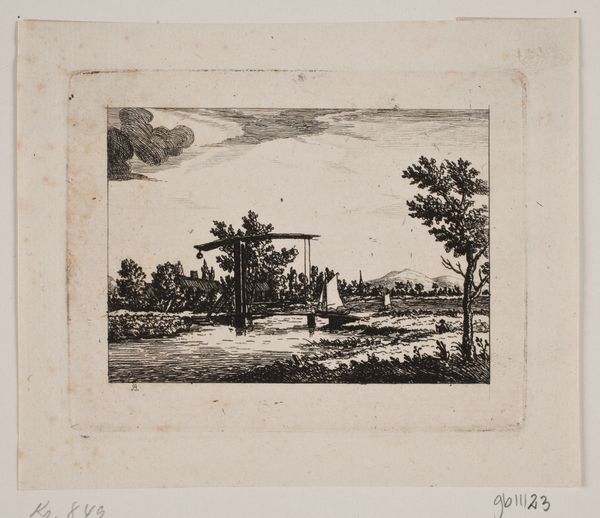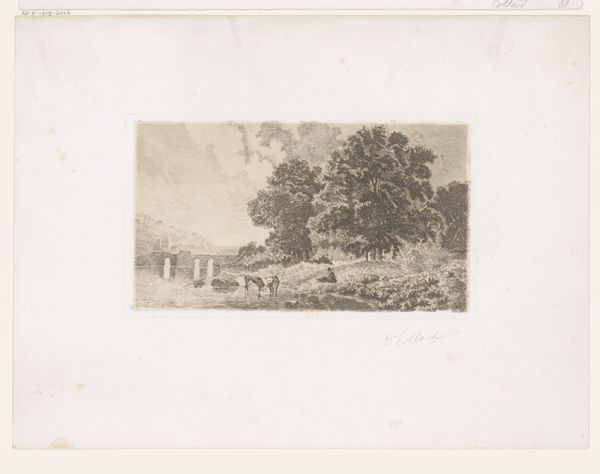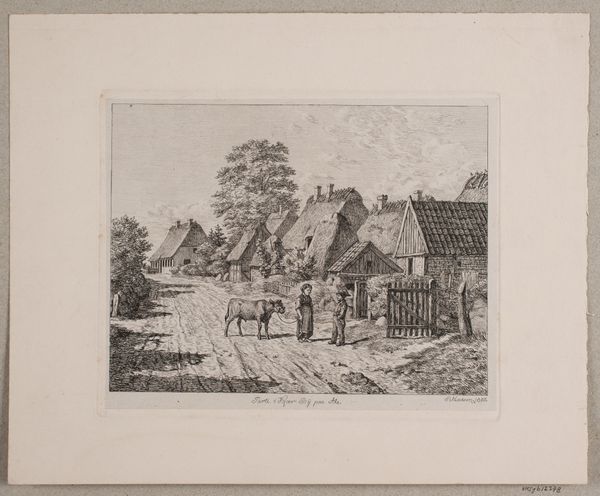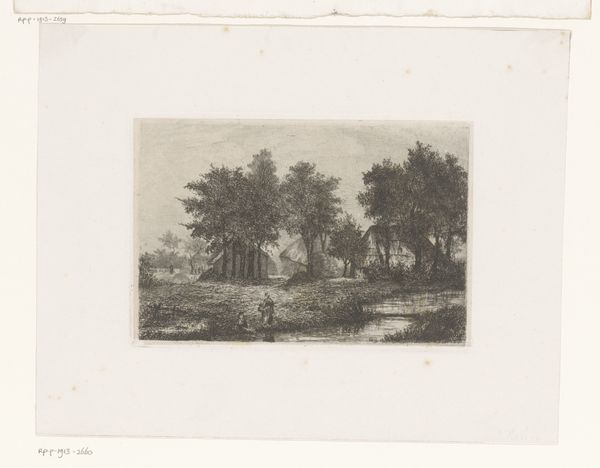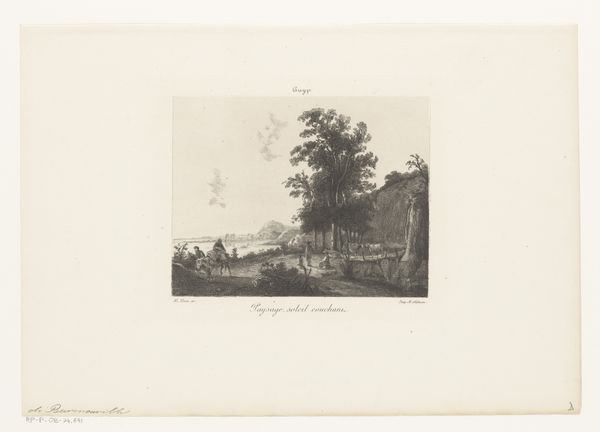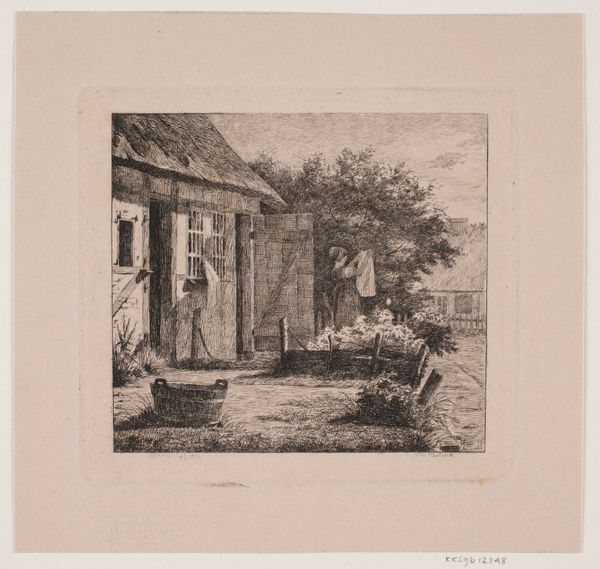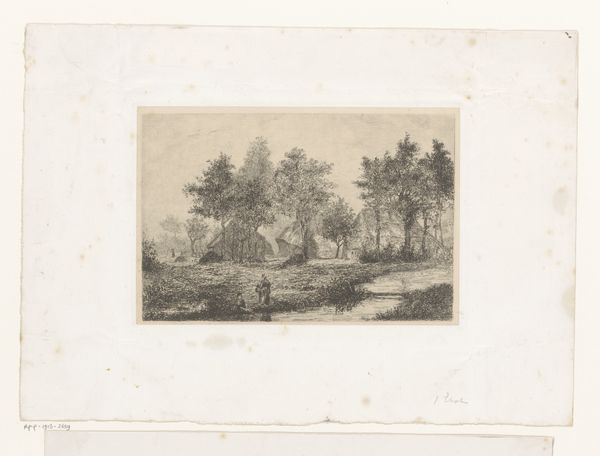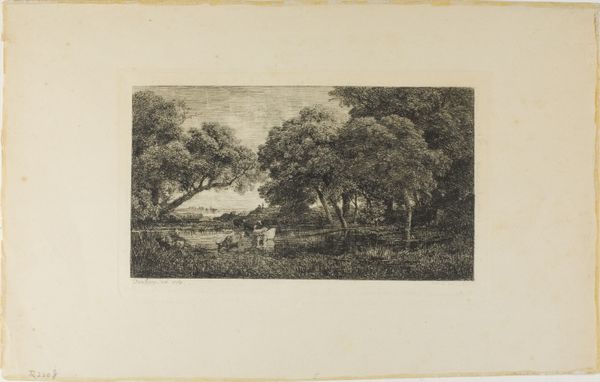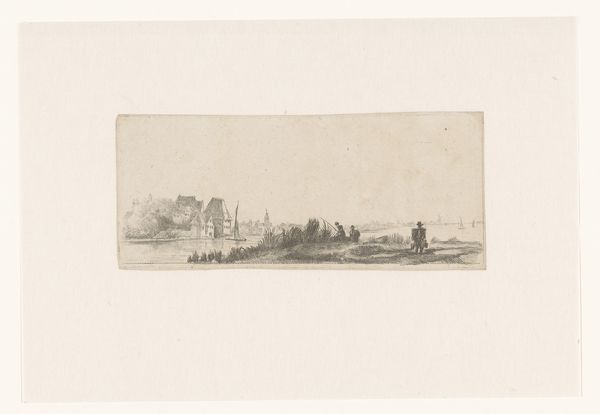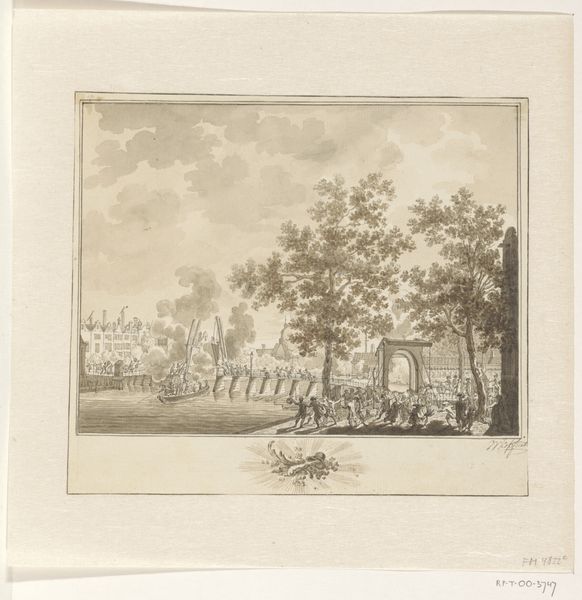
print, etching
#
neoclacissism
# print
#
etching
#
landscape
#
etching
#
line
Dimensions: 76 mm (height) x 85 mm (width) (plademaal)
Gerhard Ludvig Lahde made this etching of a landscape with a running boy sometime around the late 18th or early 19th century. The image presents a quaint scene. A thatched cottage sits to the left while a boy rushes down a tree-lined path. But how might we understand the social and cultural context of this seemingly simple image? Lahde was working in Denmark during a time of significant social and economic change, the aftermath of the Napoleonic wars. The rural ideal, seen here in this image, was becoming a potent symbol of national identity. Picturesque scenes such as this played an important role in shaping a shared sense of belonging. As art historians, we can look at a wide range of sources from the period. For example, travel writing, political pamphlets, and popular songs, to better understand the social function of such images in the period. The meaning of art is never fixed, but is always contingent on its historical context.
Comments
No comments
Be the first to comment and join the conversation on the ultimate creative platform.
